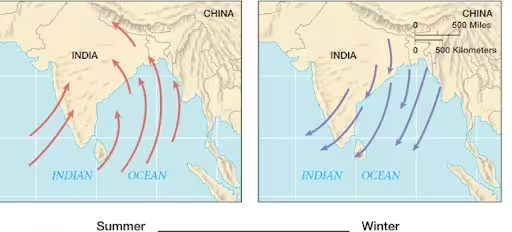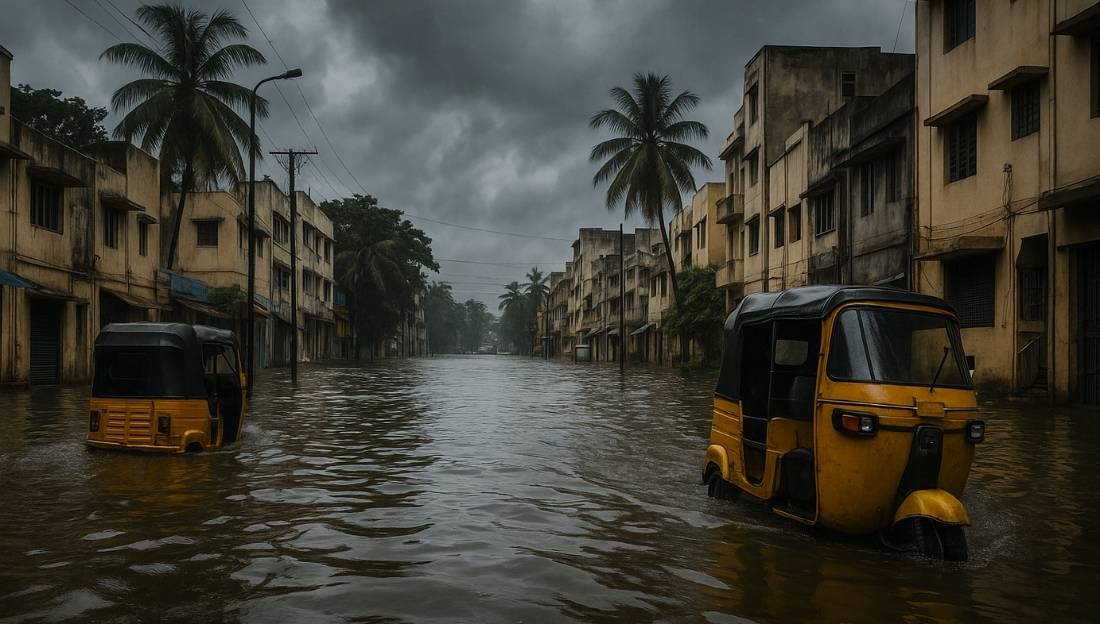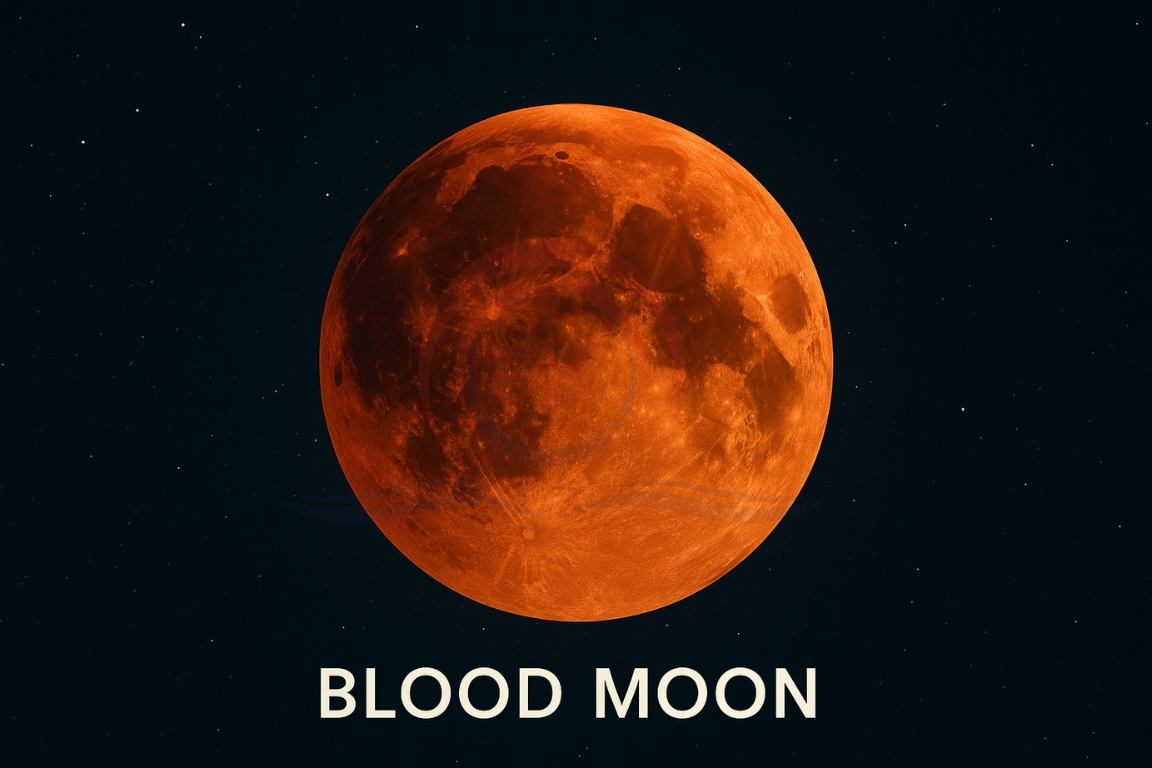The northeast monsoon arrived earlier than usual in Tamil Nadu for the second consecutive year, bringing excess rainfall above the long-period average.
Background
- Tamil Nadu receives nearly 48% of its annual rainfall from the northeast monsoon (October–December).
- While rainfall is essential for agriculture and water storage, climate change is causing short, intense rainfall spells that exceed the State’s drainage and storage capacity, leading to widespread flooding.

Urban Flooding
- Cities such as Chennai and Madurai face severe waterlogging due to poor drainage and overbuilt areas with impermeable concrete surfaces.
- Floodwaters disrupt transport, damage property, and lead to power cuts as a safety measure. Overflowing sewage mixes with floodwater, creating sanitation and health hazards.
Impact on Agriculture
- Waterlogged fields suffocate crop roots and wash away seeds and nutrients, reducing soil fertility. Fungal infections and pests thrive in prolonged wet conditions.
- Runoff from farmlands carries fertilizers and pesticides into rivers and reservoirs, worsening water pollution.
Health and Environmental Risks
- Stagnant water encourages the breeding of mosquitoes, leading to dengue, malaria, and Japanese encephalitis outbreaks.
- Flooding increases risks of leptospirosis and scrub typhus, particularly in rural and peri-urban areas.
Infrastructure Damage
- Prolonged rainfall raises the groundwater table, weakening building foundations and causing cracks, leaks, and mold growth.
- Roads and public structures lose load-bearing capacity, increasing repair costs and disrupting daily life.
Role of the Mullaperiyar Dam
- The Mullaperiyar Dam, situated in Kerala’s Idukki district but managed by Tamil Nadu, plays a key role in irrigation.
- When Kerala’s catchment areas receive heavy rain, Tamil Nadu must release excess water from the dam to maintain safety.
- This inflow coinciding with Tamil Nadu’s own monsoon rains creates a “double flood impact”, submerging Theni and nearby areas.
Way Forward
- Integrated Flood Management: Coordinate between Kerala and Tamil Nadu to regulate dam releases during overlapping monsoon periods.
- Urban Resilience Planning: Upgrade stormwater drains and restrict construction in flood-prone zones.
- Sustainable Agriculture: Promote flood-tolerant crop varieties and soil conservation measures.
- Public Health Preparedness: Strengthen vector control and disease surveillance after floods.
Northeast Monsoon
- The Northeast Monsoon (NEM) is the retreating phase of the Indian monsoon.
- It occurs from October to December, after the Southwest Monsoon (June–September) withdraws.
- Winds blow from the northeast direction — that is, from land to sea — hence the name.
- It mainly affects the southern parts of India, especially Tamil Nadu, coastal Andhra Pradesh, south interior Karnataka, and Kerala.
Mechanism
- October: Monsoon withdraws from northern India.
- High pressure forms over the Indian subcontinent.
- Low pressure develops over the Bay of Bengal.
- Winds blow from NE (land) → SW (sea).
- Winds absorb moisture over the Bay of Bengal.
- Moist winds strike the eastern coast of South India, especially Tamil Nadu.
- Result → Northeast Monsoon rains (Oct–Dec).
Conclusion
Tamil Nadu’s recurring floods highlight that “excess rain” is not always beneficial.
Managing inter-State water inflows, improving urban drainage, and adopting climate-resilient planning are essential to transform heavy monsoons from a disaster risk into a sustainable water resource.
This topic is available in detail on our main website.





